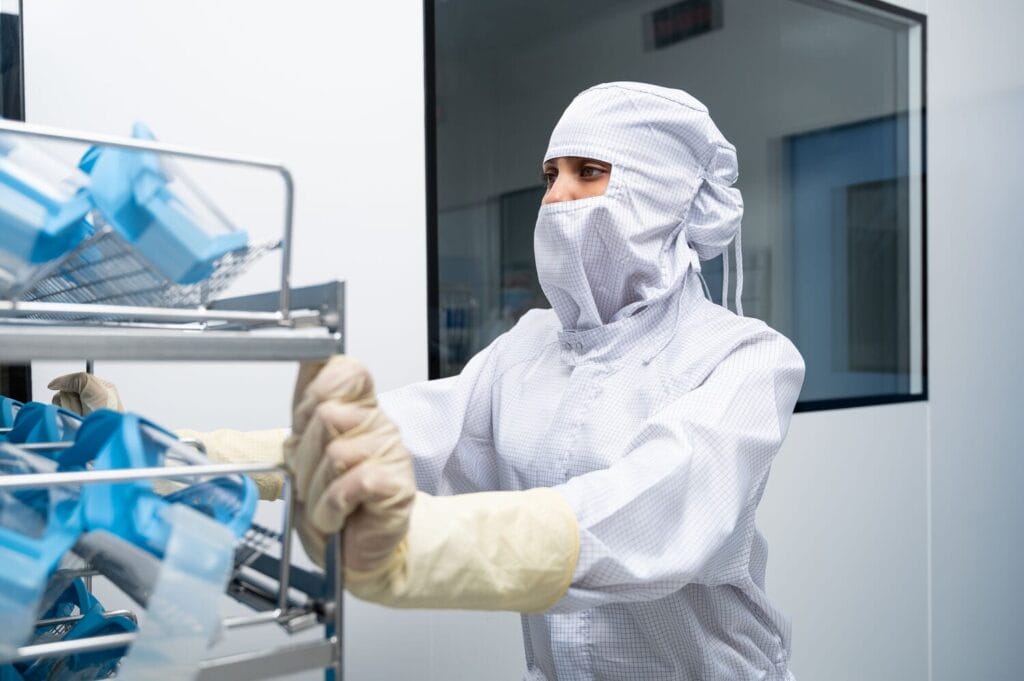
What’s the difference between sterile and non-sterile gowning?
In industries where contamination risks are high, such as pharmaceuticals and healthcare, the right gowning can be the difference between success and serious setbacks. Sterile and non-sterile gowns both play vital roles in maintaining hygiene and safety, but their use depends on the specific requirements of your environment. Let’s explore their key differences, applications, and why selecting the right gowning matters.
Understanding sterile gowning
Sterile gowns are designed for environments where even the smallest contamination can have severe consequences. Think of cleanrooms, operating theatres, or pharmaceutical production areas. These gowns undergo specialised sterilisation processes like gamma radiation or autoclaving—methods that ensure they are free from harmful microorganisms.
Their role goes beyond just protecting the wearer. Sterile gowns act as a critical barrier to prevent contamination of the environment and sensitive products. They are essential in maintaining the sterility required by regulations such as ISO 14644 and EU GMP Annex 1, which focus on contamination control in cleanrooms and sterile zones.
Why it Matters:
- High-risk areas demand high protection. Contamination in these settings can compromise product quality, endanger patient safety, and result in costly recalls or regulatory penalties.
- Proper donning and doffing procedures are essential to maintain gown sterility throughout use.
Exploring non-sterile gowning
Non-sterile gowns, while not subjected to rigorous sterilisation, are equally important in environments where sterility isn’t critical but hygiene still matters. Commonly used in laboratories, food processing plants, and general healthcare settings, these gowns provide protection against fluids and particulate matter, reducing the risk of cross-contamination.
These gowns act as a practical shield, safeguarding the wearer and their surroundings. They are designed to be cost-effective and are ideal for scenarios where cleanliness and hygiene, rather than sterility, is the primary concern.
Why it works:
- Non-sterile gowns are a great fit for environments where the focus is on hygiene without the stringent requirements of sterile zones.
- They offer a balance between protection and practicality, making them a versatile choice for many industries.
Key differences between sterile and non-sterile gowning
To make the choice clearer, here’s a side-by-side comparison:
| Aspect | Sterile Gowning | Non-Sterile Gowning |
|---|---|---|
| Sterilisation | Required (e.g., gamma radiation, autoclaving) | Not required |
| Use Cases | Cleanrooms, surgeries, pharma production | Laboratories, food processing |
| Barrier Efficiency | High, against both particulates and microbes | Moderate, primarily against particulates |
| Compliance | Meets ISO 14644 and EU GMP Annex 1 standards | Generally follows hygiene guidelines |
Choosing the right gowning for your needs
Selecting the appropriate gown depends on the level of sterility required in your operations:
- High-risk areas: Environments like surgical rooms or sterile manufacturing zones demand sterile gowns to ensure absolute protection against contamination. These gowns must align with regulatory requirements to maintain compliance and safety.
- Moderate-risk areas: For spaces where sterility isn’t the main focus but hygiene is essential, non-sterile gowns provide an effective and cost-efficient solution. Industries like food processing and general healthcare benefit from this level of protection.
Our role in gowning solutions
At Lindström, we understand the critical role gowning plays in contamination control. That’s why we offer comprehensive solutions tailored to your needs:
- Innovative tracking: Our gowns are equipped with RFID tags for lifecycle monitoring, ensuring you always have the right garments at the right time. Our online platform eLindström also allows you to follow your garments digitally.
- Sustainability commitment: We prioritise sustainable practices, including recycling worn-out textiles into new products, reducing environmental impact.
Partnering with Lindström means not just meeting hygiene standards but exceeding them with sustainable, reliable, and expertly managed gowning services.
Key Takeaways
- Sterile vs. non-sterile: Sterile gowns are essential for high-risk areas, while non-sterile gowns offer practical hygiene solutions for less critical environments.
- Regulatory compliance: Ensure your gowning practices align with industry standards like ISO 14644 and EU GMP Annex 1.
- Choose wisely: The right gowning not only protects products and environments but also ensures operational efficiency and compliance. A textile service partner like Lindström can help you make the choice, and help you with any gowning needs.
By choosing Lindström, you gain a trusted partner committed to your success. As a textile service partner, we make sure you’ll always have hygienically clean textiles on hand when you need them.




